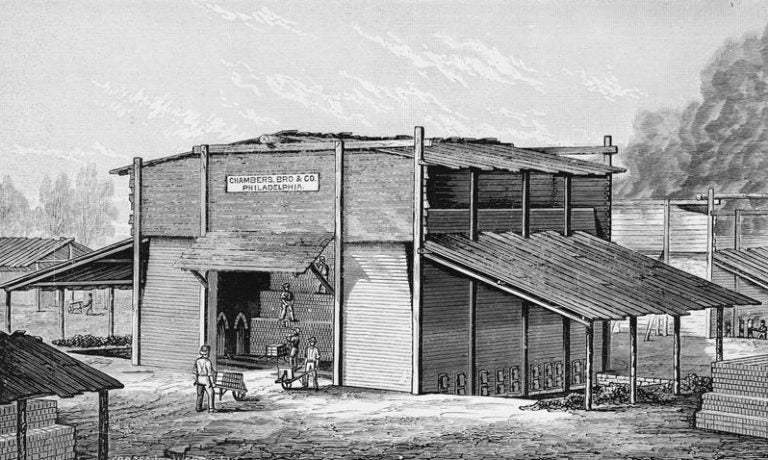A Brick History of Philadelphia: From Colonial Times to Today
Philadelphia, the City of Brotherly Love, is not only steeped in history, but also built upon a foundation of bricks. From its humble beginnings as a colonial settlement to its modern urban landscape, bricks have played a pivotal role in shaping the city's architecture and identity. Join us as we delve into the captivating story of bricks in Philadelphia, exploring their evolution, significance, and enduring legacy.
Early Days: Bricks as the Building Block of a Nation
Philadelphia's earliest structures were constructed primarily of wood, but as the city grew and fire hazards became more prevalent, brick quickly emerged as the preferred building material. The abundance of clay in the surrounding region, coupled with the ingenuity of early colonists, led to the development of numerous brickyards throughout the city. These brickyards supplied the materials for iconic landmarks like Independence Hall and the State House (now known as Independence Hall), structures that became symbols of American democracy and freedom.
The Golden Age of Brick: 18th and 19th Centuries
The 18th and 19th centuries witnessed a flourishing of brick architecture in Philadelphia. The city's prosperous merchants and elites commissioned grand mansions and elegant row houses, often constructed in the Federal and Greek Revival styles. These buildings showcased the beauty and durability of brick, with intricate details and decorative elements that reflected the architectural trends of the time.
- Federal Style: Characterized by symmetry, classical ornamentation, and a preference for red brick.
- Greek Revival Style: Emphasized simplicity and grandeur, often using white marble or limestone alongside red brick for contrasting accents.
Industrialization and the Rise of Brick Manufacturing
As Philadelphia transitioned from an agricultural center to a hub of industrial activity, the demand for bricks surged. The city's brickyards expanded, adopting new technologies and production methods to meet the increasing demand. Brick manufacturing became a significant industry, contributing to the city's economic growth and providing jobs for thousands of workers. The use of brick extended beyond residential and commercial buildings to include factories, warehouses, and other industrial structures.
The 20th Century: Modernity and the Enduring Appeal of Brick
The 20th century brought about a shift in architectural trends, with concrete and steel becoming more prevalent in modern construction. However, brick remained a popular choice for many projects, particularly for its versatility, aesthetic appeal, and enduring qualities. Brick continued to be used in a variety of styles, from Art Deco to Mid-Century Modern, showcasing its adaptability and timeless appeal.
The Legacy of Brick in Philadelphia Today
Today, Philadelphia's cityscape is a testament to the city's rich history of brick construction. From the historic landmarks of Independence Hall and the Betsy Ross House to the charming row houses of Old City and the modern architectural marvels of the city's skyline, bricks continue to define the character of Philadelphia. The city's vibrant architecture, rooted in the enduring legacy of brick, continues to inspire awe and appreciation in residents and visitors alike.
The Future of Brick in Philadelphia
As Philadelphia continues to evolve, the role of brick in its urban landscape is likely to remain significant. The city's commitment to historic preservation ensures that its brick heritage will be cherished and protected for generations to come. Moreover, new developments incorporating brick elements are emerging, demonstrating the continued relevance and adaptability of this timeless building material. Whether it's used in traditional or contemporary designs, brick will undoubtedly continue to play a vital role in shaping the future of Philadelphia's architectural landscape.
In conclusion, the history of bricks in Philadelphia is a compelling story of innovation, resilience, and enduring beauty. From its early use in colonial structures to its role in shaping the city's industrial growth and modern architecture, brick has left an indelible mark on the urban fabric of Philadelphia. As the city continues to evolve, its brick heritage will serve as a reminder of its past, a symbol of its present, and an inspiration for its future.

